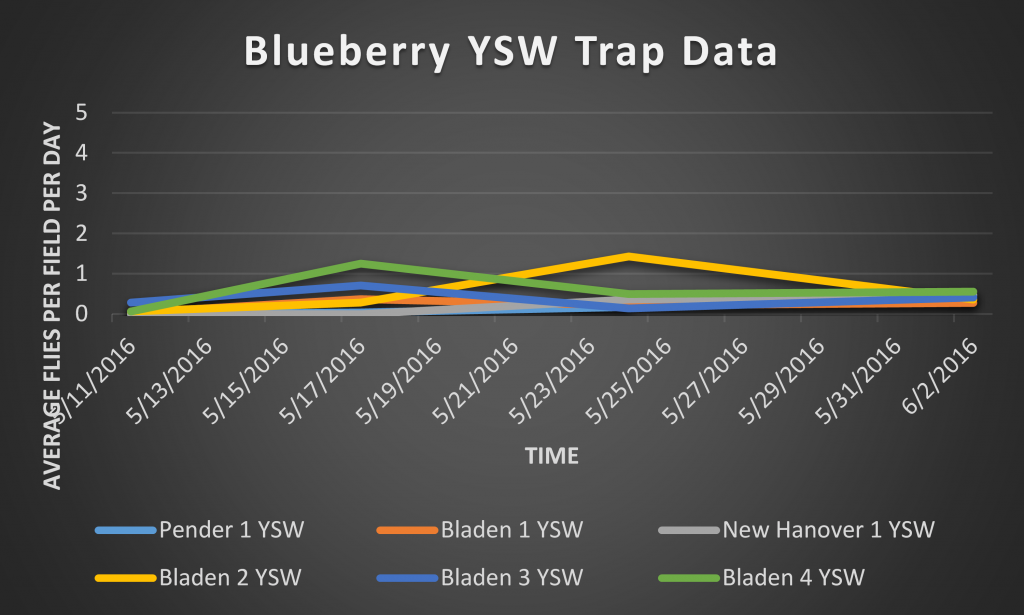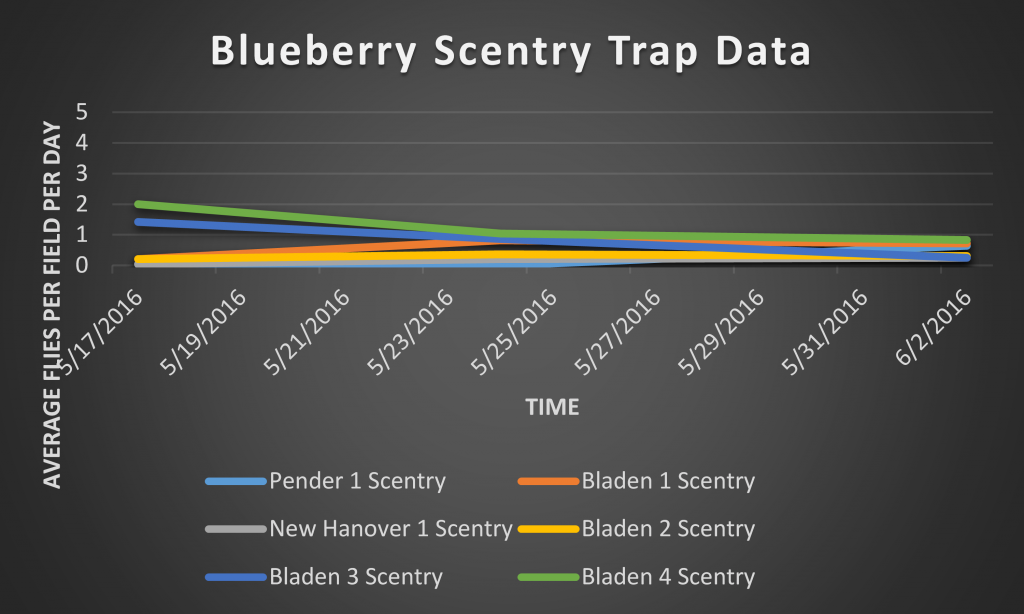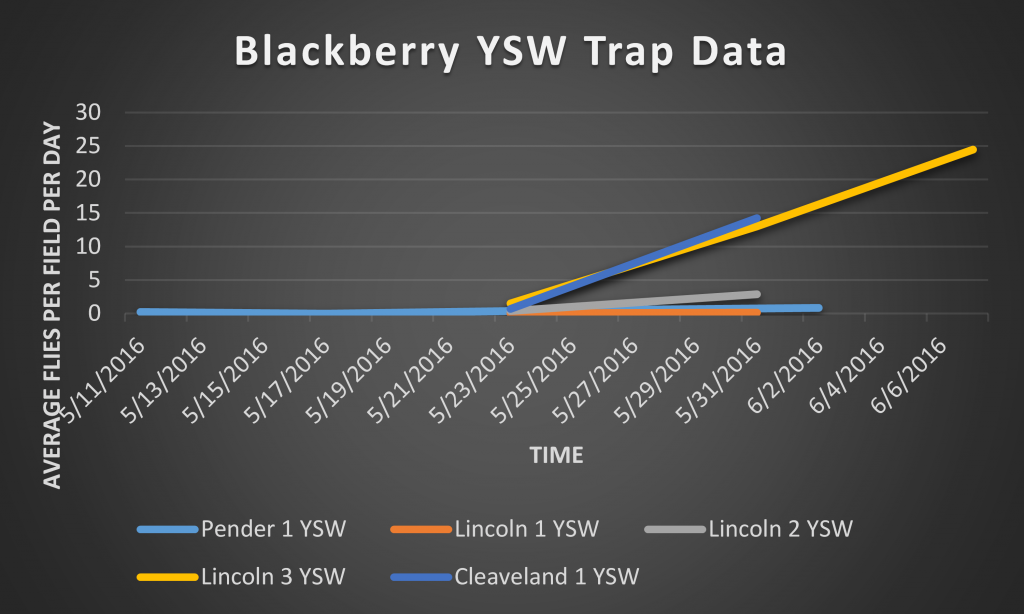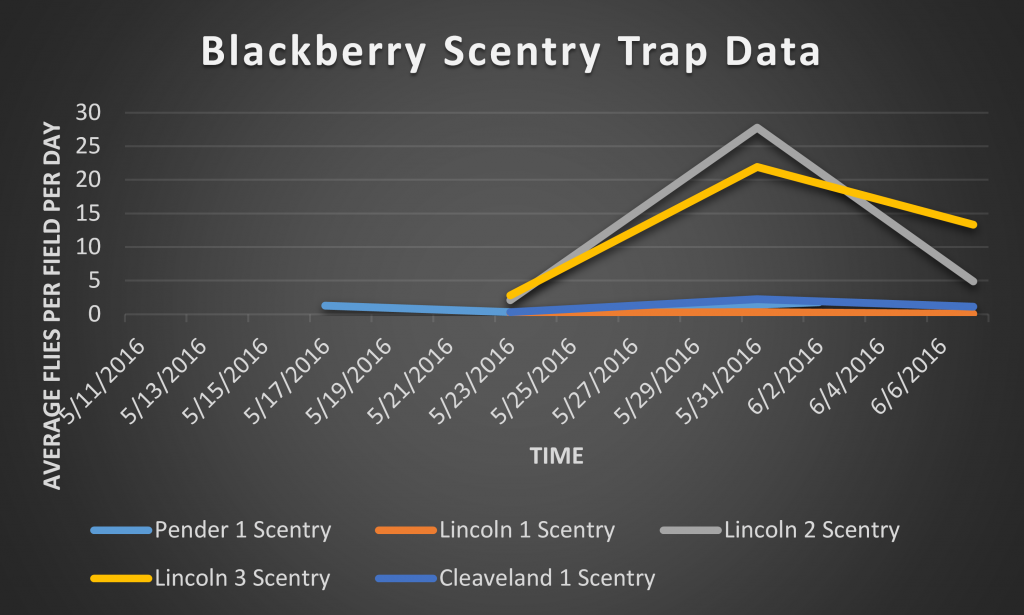Spotted Wing Drosophila Monitoring Report June 10, 2016
go.ncsu.edu/readext?415939
en Español / em Português
El inglés es el idioma de control de esta página. En la medida en que haya algún conflicto entre la traducción al inglés y la traducción, el inglés prevalece.
Al hacer clic en el enlace de traducción se activa un servicio de traducción gratuito para convertir la página al español. Al igual que con cualquier traducción por Internet, la conversión no es sensible al contexto y puede que no traduzca el texto en su significado original. NC State Extension no garantiza la exactitud del texto traducido. Por favor, tenga en cuenta que algunas aplicaciones y/o servicios pueden no funcionar como se espera cuando se traducen.
Português
Inglês é o idioma de controle desta página. Na medida que haja algum conflito entre o texto original em Inglês e a tradução, o Inglês prevalece.
Ao clicar no link de tradução, um serviço gratuito de tradução será ativado para converter a página para o Português. Como em qualquer tradução pela internet, a conversão não é sensivel ao contexto e pode não ocorrer a tradução para o significado orginal. O serviço de Extensão da Carolina do Norte (NC State Extension) não garante a exatidão do texto traduzido. Por favor, observe que algumas funções ou serviços podem não funcionar como esperado após a tradução.
English
English is the controlling language of this page. To the extent there is any conflict between the English text and the translation, English controls.
Clicking on the translation link activates a free translation service to convert the page to Spanish. As with any Internet translation, the conversion is not context-sensitive and may not translate the text to its original meaning. NC State Extension does not guarantee the accuracy of the translated text. Please note that some applications and/or services may not function as expected when translated.
Collapse ▲With summer, has come earlier spotted wing drosophila (SWD) pressure than in recent years. As a result of this early pressure, growers are having to engage in proactive management. Several blackberry research sites have had a growing population of spotted wing over the last couple weeks.
However as these sites take management action, we see substantial drops in the fly capture numbers. This could mean that the populations of SWD are being successfully reduced by insecticides or other management efforts, but that is not the only possibility. Population dips have also corresponded with fruit ripening, and thus increased vulnerability of the fruit; in particular in blackberries. Previous research in our group has suggested that SWD could be significantly more attracted to the available berries as a site for ovisposition than to fermentation volatiles in traps.
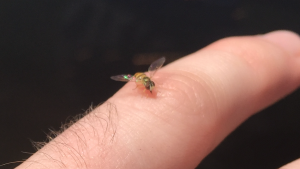
Syrphid flies are common pollinators seen in blackberry fields. Blackberries often have open flowers and harvestable fruit present at the same time. Photo: Grant Palmer
The average number of total (male and female) SWD captured per site per day are presented in the figures below. Trapping began at six blueberry fields on May 11, 2016. Scentry lures were not available until May 17th, so these were deployed at blueberry locations during the second week of monitoring.
We are monitoring a total of five blackberry fields, and first checked traps on May 17, 2016.
Data is continually processed and will be updated weekly as it becomes available.
SWD trap captures are generally lower in blueberry fields than in blackberry fields. Decreases in recent trap captures corresponds with fruit ripening and field spraying. It will be interesting to see whether Lincoln 3 YSW drops correspondingly with its Scentry counterpart.



